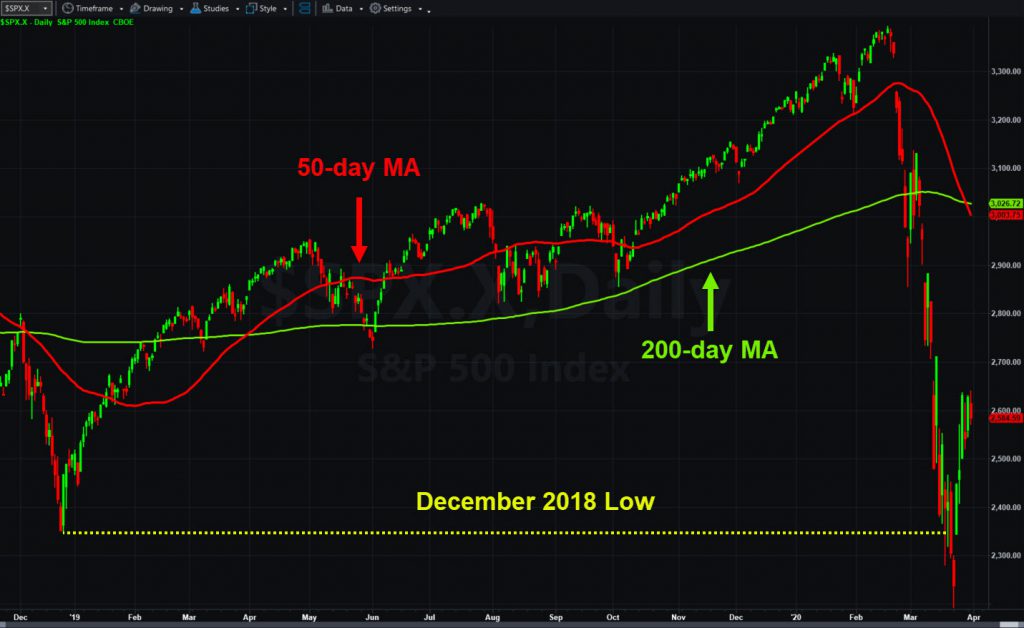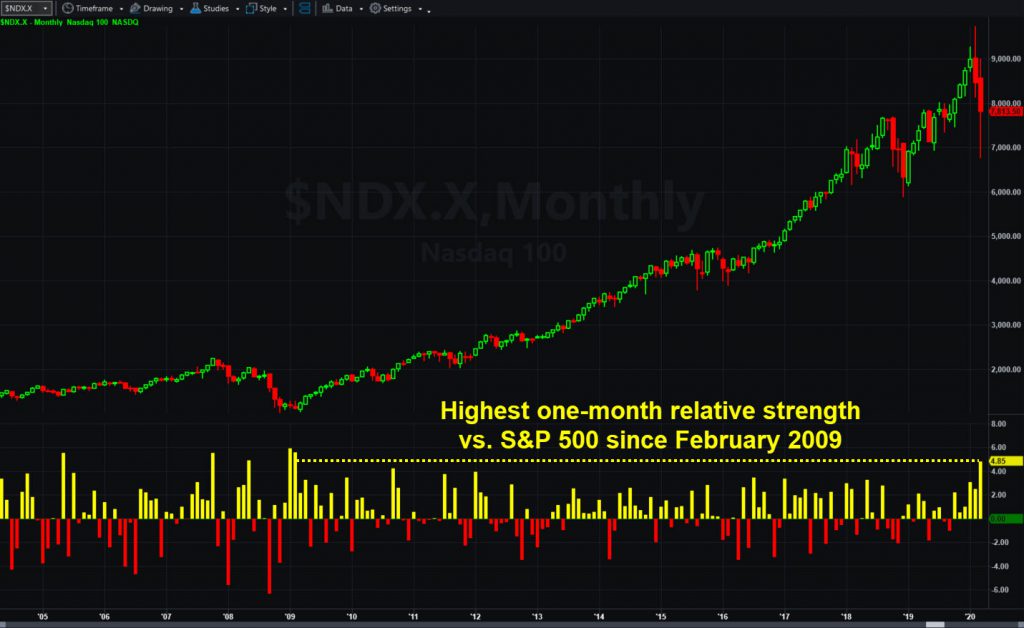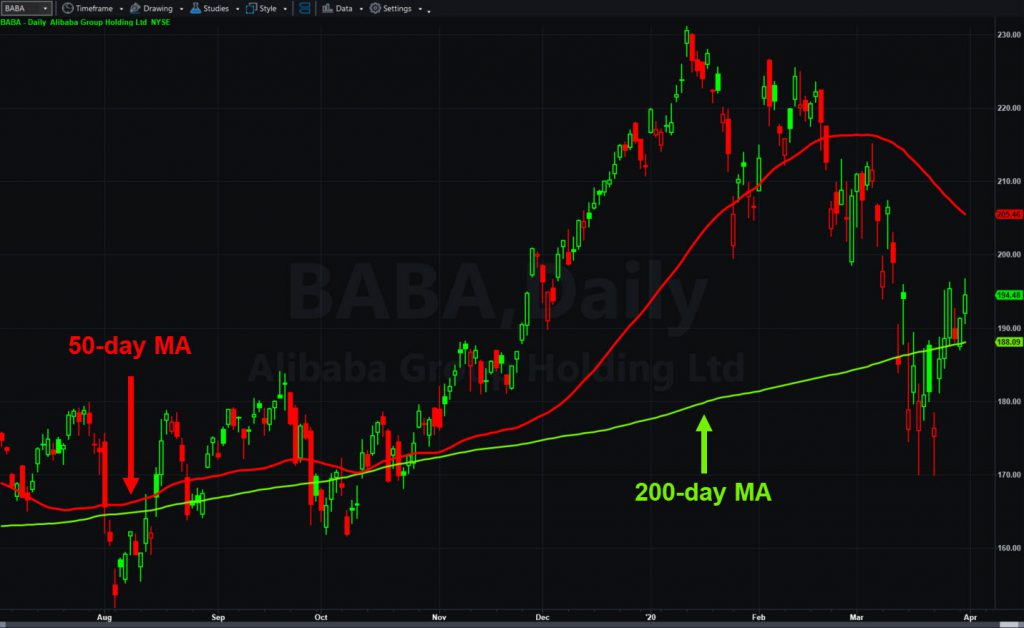Stocks just had their worse quarter since the financial crisis. Now that it’s over, where are investors looking next?
First, a brief review of the rocky few weeks we’ve just endured:
- At one point the S&P 500 was up 5 percent for the year. Then investors realized the coronavirus outbreak would trigger a global wave of business closures and travel restrictions.
- They unloaded stocks in a flash, causing the market to endure its fastest correction ever. The S&P 500 went from record highs to 10 percent drop in just six sessions. Volatility also had its quickest spike in history.
- The index fell 19 percent between December 31 and March 31. It passed the 14 percent drop in the third quarter of 2011, making it the worst quarter since the close of 2008.
- Economically sensitive industries like energy, airlines and banks fell the most. Still, every major sector and group declined.
- Crude oil had a total meltdown as the Saudis and Russians increased oil production. Combined with a shutdown in travel, black gold had its worst quarter ever.

What’s Happening as a New Quarter Begins?
While fears of a sharp economic slowdown hammered stocks between February 24 and March 23, things have stabilized in the last week. Unprecedented pledges by the the Federal Reserve and Congress to support the economy played a big role.
Those steps managed to calm the initial shock, like a bandage on a wound. The big question now is whether the injury will heal on its own. Will these shurtdowns halt the spread of coronavirus? If they do, investors may look past the short-term pain of job losses and negative gross domestic product.
If the shutdowns fail and the disease keeps spreading, new lows could be in store as optimism fades.
Technology Holding its Ground
Based on President Trump’s April 30 deadline for social distancing, we have several weeks of wait-and-see. In the meantime a few things are starting to emerge.
First has been the utter dominance of the Nasdaq-100 and technology. Traditional “growth” stocks like semiconductors, software and e-commerce have outperformed the broader market by a mile. There may even be reason to think they’ll benefit as the Covid-10 outbreak changes working practices around the world.
Consider these three cases:
- Microsoft (MSFT), the most valuable U.S. company by market cap, said its demand from its cloud-computing business has grown with all the people stuck at home.
- Micron Technology (MU), one of the most important semiconductor names, reported strong chip demand as employees work remotely.
- Netflix (NFLX), the pioneer of streaming video, is closing in a new 52-week high as the coronavirus lockdown encourages more people to sign up.

China Trying to Recover
Another surprising trend is the strength in Chinese technology stocks like Alibaba (BABA) and JD.com (JD). Market Insights highlighted them in early 2020 following President Trump’s trade agreement.
The outbreak in Wuhan dragged on Chinese stocks in early February, but it’s shown signs of resuming in the last week or two. Favorable economic news this week has helped. Beijing is also reporting a major slowdown in its epidemic.
The first thing to remember about China is that its consumer economy developed in the Internet age. It doesn’t have emptying shopping centers and legacy retailers like Macy’s (M) dragging on its market. It’s purely digital.
Second, changes in global stock indexes give investors a strong reason to buy. Third, Chinese Internet stocks often follow sentiment toward the Nasdaq-100. If U.S. tech stocks are rising, their peers across the Pacific have historically risen even more.

Is All the Bad News Priced In?
Outlooks have growth more positive in the last week or so. Bank of America observed on Monday that the S&P 500’s recent decline was typical for a correction during a recession. In other words, all the bad news might be priced in already.
That could reduce the impact of weak economic numbers like today’s ADP private-sector payrolls report and Friday’s non-farm payrolls. Forecasts are dismal.
Also on Monday, Mohamed El-Erian of Allianz said the “sell everything” moment has passed. El-Erian has credibility because he warned investors all the way back on February 3 not to “buy the dip” because the coronavirus outbreak would “paralyze China.” There have also bullish moves lately by other big money managers including Bill Ackman.
In conclusion, stocks just finished their worst quarter in 11 years because of a microscopic germ. Investors don’t know when the pandemic will end, but there have also been signs of cautious optimism. That’s especially true for technology stocks and the Nasdaq-100.
Quarterly Winners & Losers in the S&P 500
These were the S&P 500’s five biggest gainers in the first quarter:
- NortonLifeLock (NLOK): Adjusting for a special dividend on XX, NLOK rose 39 percent.
- Citrix Systems (CTXS): Up 28 perecent.
- Regeneron Pharmaceuticals (REGN): Up 29 percent.
- Netflix (NFLX): Up 14 percent
- Gilead Sciences (GILD): up 14 percent.
These were the S&P 500’s five biggest decliners in the first quarter:
- Apache (APA): Down 84 percent.
- Norwegian Cruise Line (NCLH): Down 69 percent.
- Noble Energy (NBL): Down 63 percent.
- Royal Caribbean Cruises (RCL): Down 61 percent.
- Marathon Oil (MRO): Down 61 percent.



























